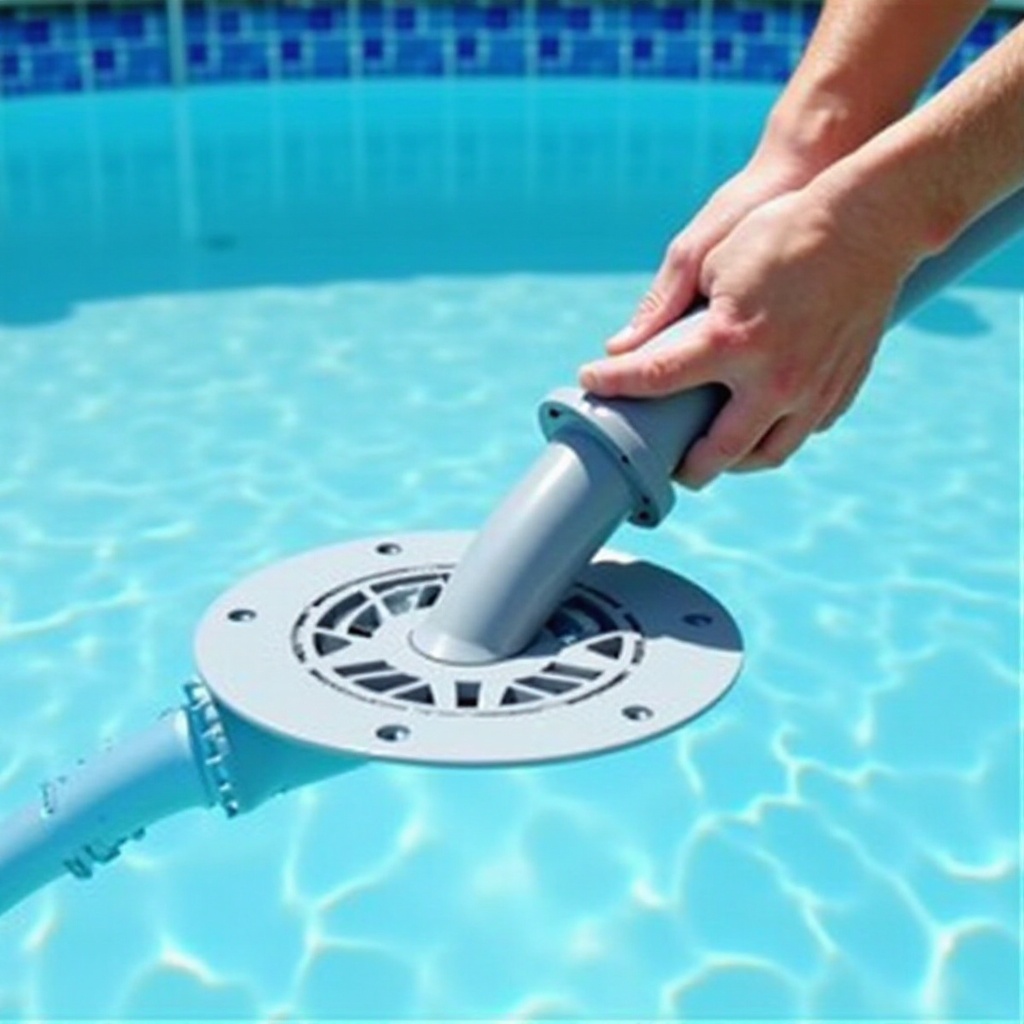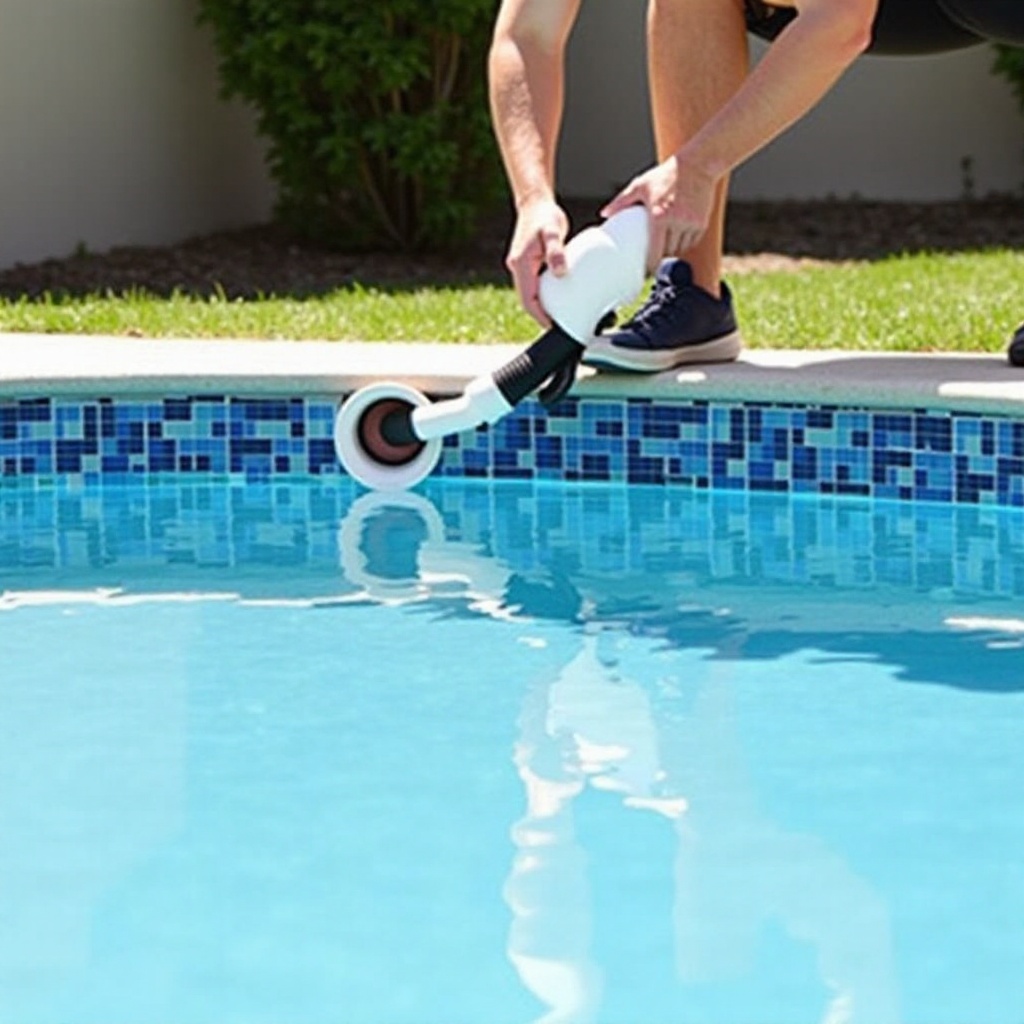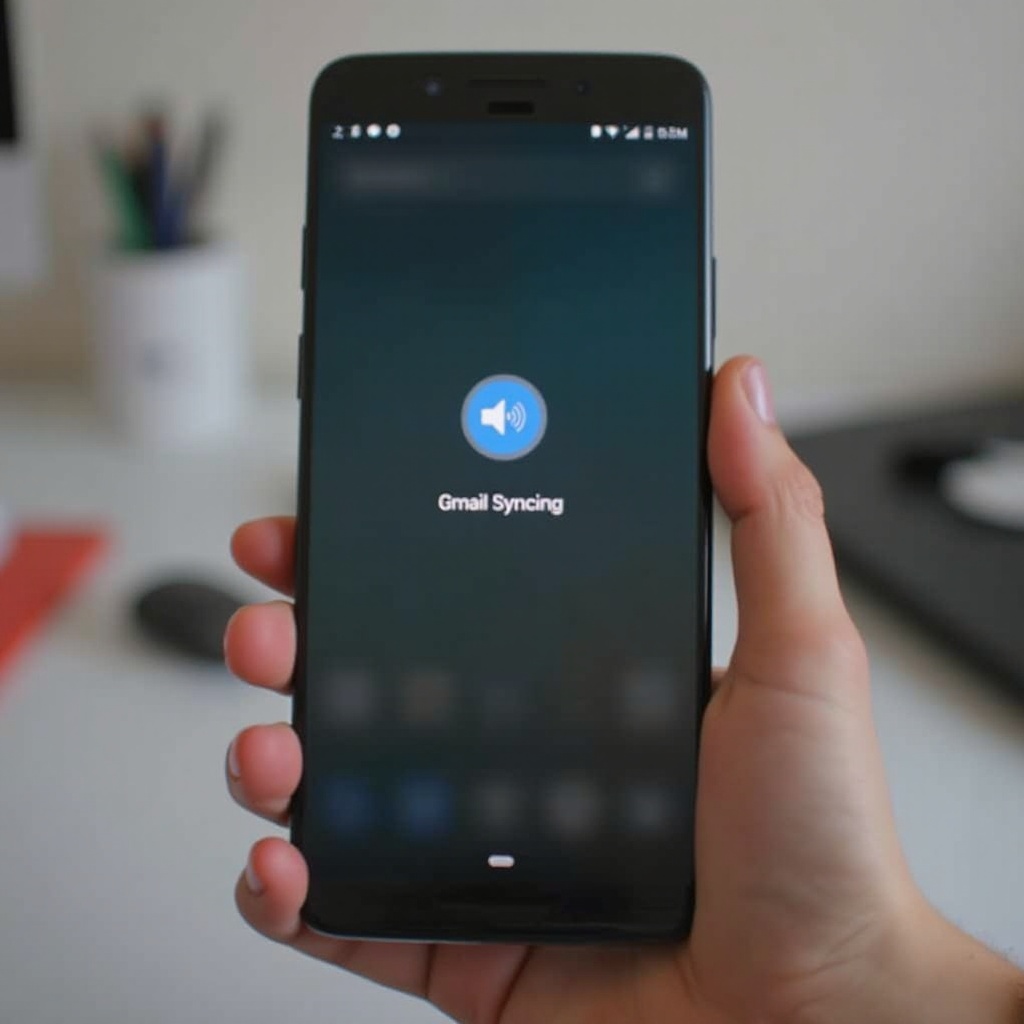Introduction
Maintaining a clean above-ground pool is essential for an enjoyable swimming experience. One of the best ways to ensure your pool is free from debris is by using a pool vacuum. While the idea of hooking up a pool vacuum might seem intimidating, it’s actually quite straightforward once you know the steps. In this guide, we’ll walk you through how to hook up a pool vacuum for your above-ground pool, detailing equipment needed, preparation steps, and effective vacuuming techniques. By the end of this, you’ll be a pro at keeping your pool sparkling clean.

Essential Equipment Needed
Before you start, make sure you have all the necessary equipment at hand. Missing even one item can hinder the vacuuming process:
- Vacuum Head: This is the end part that makes contact with the pool floor.
- Telescopic Pole: An adjustable pole that allows you to maneuver the vacuum head around the pool.
- Vacuum Hose: Connects the vacuum head to the pool’s filtration system.
- Skimmer Plate: Allows the hose to connect to the skimmer.
- Vacuum Plate: Ensures the vacuum hose is secured to the skimmer.
Having all this equipment within reach will make the setup process smoother and more efficient.
Preparation Steps
Before connecting everything, follow these preparation steps:
- Check Pool’s Water Level: Ensure the water level is halfway up the skimmer opening to avoid air being sucked into the system.
- Clean the Skimmer Basket: Remove any leaves or debris to prevent clogging.
- Inspect Vacuum Hose for Leaks: A damaged hose reduces suction and efficiency.
Being well-prepared sets the stage for a hassle-free vacuuming experience.
Attaching the Vacuum Head to the Telescopic Pole
Attaching the vacuum head to the telescopic pole is an important step in the process. Here’s how to do it:
- Secure the Vacuum Head: Slot the vacuum head into the end of the telescopic pole. Most vacuum heads come with a simple push-button lock.
- Ensure Stability: Give the connection a firm tug to ensure it’s securely attached. This helps prevent the head from detaching while vacuuming.
With the pole and vacuum head securely connected, you’re ready to attach the vacuum hose.
Connecting the Vacuum Hose
Here’s how to connect the vacuum hose to the system:
- Attach One End of the Hose: Secure one end of the vacuum hose to the vacuum head. Ensure it’s firmly connected to avoid air leaks.
- Extend the Hose: Uncoil the hose completely and lay it out across the surface of your pool. This helps to remove any unwanted twists.
Connecting the hose correctly is crucial for maintaining strong suction, so double-check all connections before moving on.

Priming the Vacuum Hose
Priming the vacuum hose is essential to remove air and ensure efficient suction. Priming involves submerging the hose:
- Submerge the Hose: Starting with the vacuum head end, slowly submerge the hose into the pool.
- Watch for Air Bubbles: As the hose fills with water, you’ll see air bubbles emerging. Continue until no more bubbles appear.
This process, important for maintaining suction power, ensures your vacuum works effectively without drawing in air.
Hooking Up to the Pool’s Skimmer
With the hose primed, you can now connect it to the skimmer:
- Remove the Skimmer Basket: Take out the skimmer basket and any other obstructions.
- Attach the Hose to the Skimmer: Insert the hose end into the skimmer, attaching it through the vacuum plate.
This connection allows your vacuum system to utilize the pool’s filtration pump, making the vacuuming process easier.
Effective Vacuuming Techniques
Now that everything is set up, it’s time to start vacuuming. Here are some techniques to make your cleaning session effective:
- Start at the Shallow End: Begin vacuuming at the shallow end and work your way towards the deep end.
- Use Slow, Steady Movements: Move the vacuum head slowly to avoid stirring up debris. Too quick movements can make cleaning harder.
- Overlap Each Pass: Ensure you slightly overlap your previous cleaning pass to avoid missed spots.
Effective vacuuming ensures your pool remains pristine and inviting.

Troubleshooting Common Issues
Even with the best preparation, you may encounter some issues:
- Loss of Suction: Often caused by air in the hose or a clogged filter. Ensure all connections are tight and the filter is clean.
- Vacuum Head Not Moving: Check for blockages in the vacuum head or ensure the pole is securely attached.
Addressing these common issues can greatly improve your vacuum’s performance.
Maintenance Tips
Regular maintenance is key to prolonging the life of your pool vacuum:
- Rinse the Vacuum Hose: After each use, rinse the hose to remove any debris.
- Inspect for Wear and Tear: Regularly check parts for damage and replace as necessary.
- Store Properly: Store your vacuum in a cool, dry place away from direct sunlight.
Maintaining your equipment ensures it’s always ready for your next cleaning session.
Conclusion
Properly hooking up and using a pool vacuum for your above-ground pool is essential for maintaining a clean swimming environment. By following these steps and maintenance tips, you ensure your pool remains a wonderful place for relaxation and fun. Happy swimming!
Frequently Asked Questions
Why is my pool vacuum losing suction?
Loss of suction can happen due to air in the vacuum hose, a clogged filter, or a blockage in the skimmer. Ensure all connections are tight and that the filter is clean. Checking these areas will often resolve suction problems.
How often should I vacuum my above-ground pool?
For optimal cleanliness, vacuum your above-ground pool at least once a week. However, if your pool is in frequent use or located in an area with a lot of debris, more frequent vacuuming may be necessary. Regular vacuuming helps prevent dirt and algae build-up.
Can I use an automatic pool cleaner for my above-ground pool?
Yes, you can use an automatic pool cleaner for your above-ground pool. These cleaners are efficient and can save you time. Ensure the cleaner is compatible with above-ground pools and follow the manufacturer’s instructions for optimal performance.


